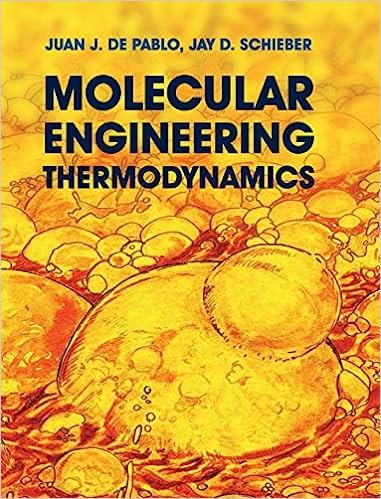Answered step by step
Verified Expert Solution
Question
1 Approved Answer
( 2 6 pts ) 1 , 4 - Dioxane has historically been used to stabilize chlorinated solvents and more recently has been found to
ptsDioxane has historically been used to stabilize chlorinated solvents and more recently has been found to contaminant numerous consumer and food products. Based on this experimental evidence, the US Environmental Protection Agency EPA has listed dioxane as a high priority chemical and classified it as a probable human carcinogen. You are tasked with analyzing a stage stripping column that operates isobarically at and isothermally at and is used to purify water contaminated with dioxane. The entering liquid stream contains moldioxane D and the balance water W If the amount of pure nitrogen N available is how much liquid feed in can this column treat if the EPA requires the column to produce a liquid stream containing moldioxane in water. Assume solute free flow rates are constant, meaning water is nonvolatile and nitrogen does not dissolve in water. Use the Wilson equation to describe the dioxane and water equilibrium. The Wilson constants for dioxane D and water W are given below and the Antione's Constants for dioxane are given below in terms of and
tableAntoine's ConstantsABCDioxane,
tableWilson Constants
a Draw a PFD and label using solute free flowrates and mole ratios pts
b Provide your specifications used in Excel Solver pts
c What is the flowrate
i Use an initial guess of

Step by Step Solution
There are 3 Steps involved in it
Step: 1

Get Instant Access to Expert-Tailored Solutions
See step-by-step solutions with expert insights and AI powered tools for academic success
Step: 2

Step: 3

Ace Your Homework with AI
Get the answers you need in no time with our AI-driven, step-by-step assistance
Get Started


